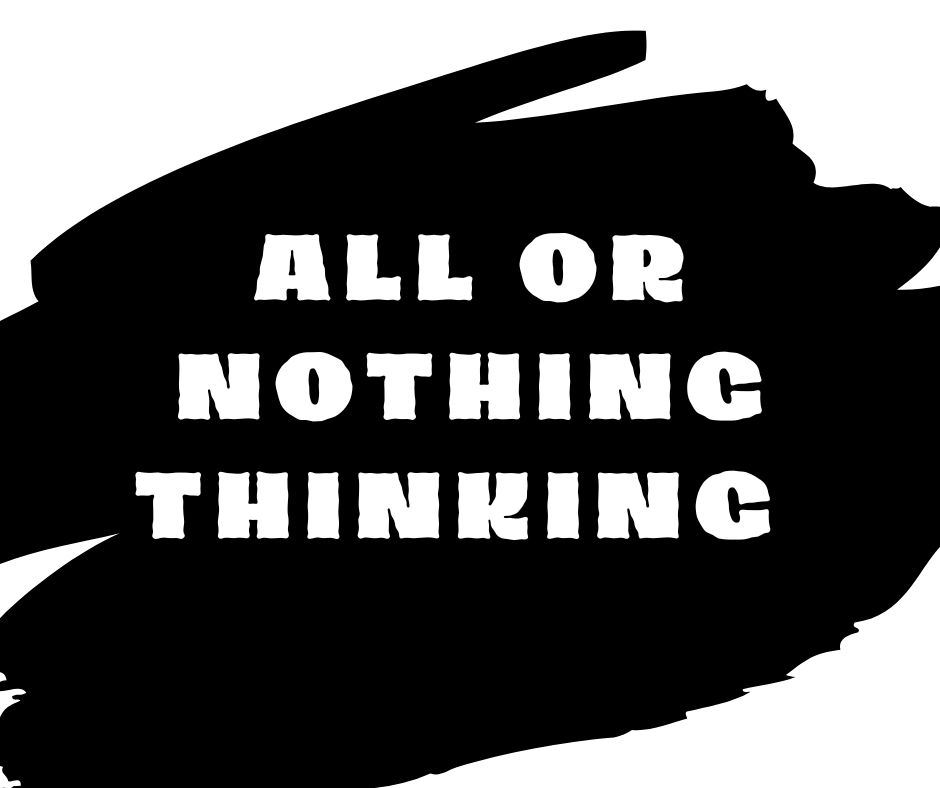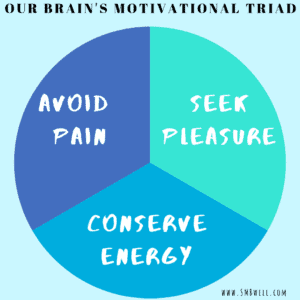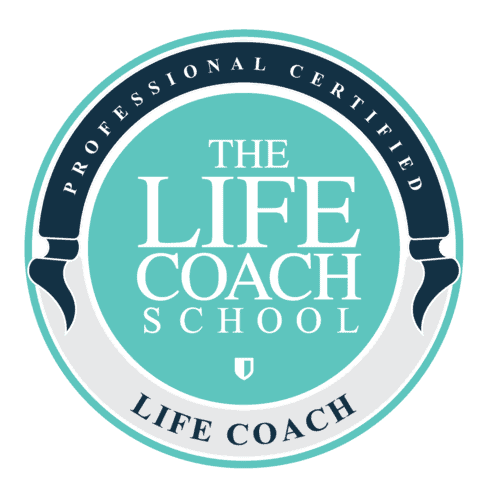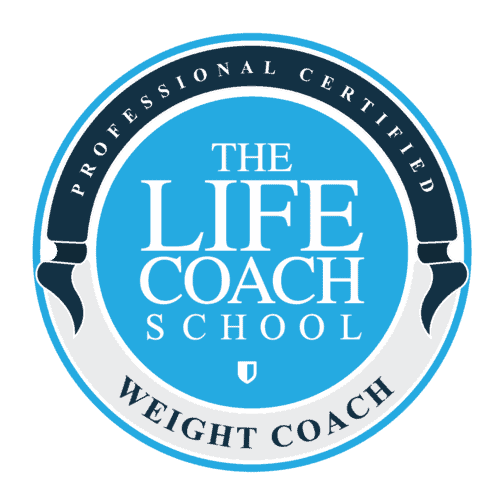Podcast: Play in new window | Download
Subscribe: Apple Podcasts | Spotify | Amazon Music | RSS | More
All or Nothing Thinking
All or nothing thinking come up a lot in my coaching, in the world, and frankly, in my own brain. It’s also called black or white thinking. At it’s core it’s an idea that there’s a right way of doing something and a wrong way of doing something. Google defines all or nothing thinking as ” a cognitive distortion that shows up in anxiety disorders.” It’s called a cognitive distortion because it distorts the way we see the world. This way of thinking keeps us from seeing the world as it is, a complex, nuanced, system.
While I agree all or nothing thinking creates anxiety and can distort our view of the world, I don’t believe it’s a disorder or that something has gone wrong. Rather than think we’re broken, I see this sort of thinking as a level for us to move through in our adult stages of development. I find it much more helpful to address what we are doing, how it’s helpful or unhelpful, and learn ways of being that support our best selves .
Where does All or Nothing Thinking Come From?
Firstly, all or nothing thinking comes from having a human brain. I mean, talk about comforting! How can we feel shame if it’s a sort of set point of the human brain?! The human brain loves all or nothing thinking. Our brain has a motivational triad. It has three drives: to conserve energy, stay safe, and avoid discomfort.
All or nothing thinking soothes the brain in all 3 of its’ motivators. Ever since we were cave people the brain had to make snap decisions to keep us safe. Making snap deacons saves the brain energy. Are you safe? Will you survive? Is this berry good or bad? The challenge in modern society is that the stakes are not so dramatic anymore. Listen in to this week’s podcast for examples on how our human brain reacts as dramatically to everyday situations as it does to being chased by a tiger.
The second reason we engage in black or white thinking is we are still growing up. Huh? But I’m____years old. Yep! And there are still stages of development for you to move through. While some humans don’t self reflect or move through the next level of development, I imagine that most people who would read a post like this will So yes, there is a stage of adult development where we stop seeing things so binary.
The Double Danger of All or Nothing Thinking
Many articles and books list tens of dangers of all or nothing thinking. Today I am focusing on one. Black or white thinking is harmful to the relationships we’re in. The relationship with ourselves and the relationship with others.
When we are thinking things are either good or bad, right or wrong, we are quick to judge others as good or bad, right or wrong. It’s as if we’re back in middle school: “If I’m right, then she must be wrong.” This black or white thinking hurts us from two sides. Firstly, Judging other people doesn’t lead to close relationships. Thinking they’re bad and you’re good leaves a sort of hierarchy that isn’t conducive to relationships and is immature thinking.
Moving from black or white to more flexible thinking allows for curiosity and open-mindedness. It’s the next level of development because it’s actually more advanced thinking. Our brain doesn’t like to consider two thoughts as true. And yet, evolve me must. When we consider another perspective, another way of thinking, we enter a new level of maturity.
The second danger of all or nothing thinking is it impacts our relationship with ourselves too. When we judge others, we reinforce the belief that there’s a right and wrong way for us to do things too. This is where some of the anxiety comes from. Many can feel that we need to be so careful to make sure we’re doing things the “right” way.
Stepping out of all or nothing thinking is so helpful for all relationships. First, when you stop being so quick to judge others, you feel kinder and more compassionate towards them. You start thinking thoughts like “maybe that’s what’s best for them” and feeling better and more compassionate towards these people you’re in relationship with. Second, when you stop being so judgmental of others, you open up space to be more accepting of yourself.
How to Move Out of All or Nothing Thinking
The first step to change is noticing something. Awareness of our current pattern. Which means that your first action step to move through this stage of development is to notice where you’re engaging with all or nothing thinking. Where are you thinking there’s a right way and a wrong way?
Secondly, this is a good time to make sure you’re committed to your self-learning and relfection. The more you know, the better you can feel. An easy and simple way is to commit to listening to this podcast once a week. Episodes are short lessons to help you learn about yourself so you can live a life you love. I am committed to doing the research on the outside to help you through the wires. That would be a good start if you’re just starting.
If you’ve been listening for a while, time to graduate to the next unit of study. Maybe you choose to learn the foundations of brain management by taking my happiness habits course. Perhaps you take my Parenting Teens Class to learn how parenting teens is different, and what to do about those differences so you raise less anxious teens and have less conflict in your house. Maybe you join my group coaching so you have daily and weekly accountability with a group of amazing women who are committed to learning and practicing to live our best lives. Perhaps something else. The takeaway here is to commit to you. Take learning about yourself seriously. Commit to your growth and expansion.






